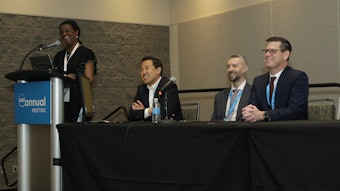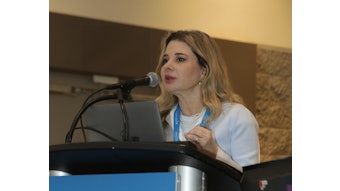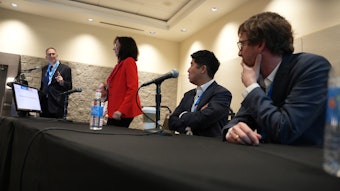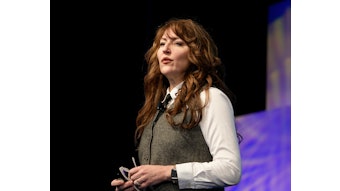The err around us
How to stave off, mitigate, and manage medical mistakes that can impact professional practice and patient care.
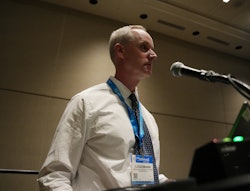
We are all human and make mistakes. But what happens when an error affects your work?
A new Annual Meeting session reviewed the process of medical missteps, including how to prevent them, report them, and cope with the aftermath. Nicholas Logemann, DO, FAAD, Commander in the U.S. Navy Medical Corps, led a panel in F087 – To Err Is Human: Mistakes in Health Care: How to Avoid Them and Manage Them When They Occur.
Medical errors are real in medicine, with the potential to occur in any specialty including dermatology, said Dr. Logemann. And while severe consequences, such as death, are unlikely in the field of dermatology, he said the inherent visibility of dermatology means that a medical mistake could result in effects that have substantial impact on patients’ daily lives and psychosocial well-being.
“This topic is important to any practicing clinician because, as humans, we are all fallible, and at points in our careers we will make mistakes. We therefore need to be mindful and prepared about how we deal with them,” began Dr. Logemann, who is also a dermatologist at Naval Medical Center San Diego and associate professor of dermatology at the Uniformed Services University of Health Sciences.
The session panelists included:
- Michelle Bongiorno, MD, FAAD, who discussed how best to disclose an error while keeping the patient safe
- Curtis Lamar Hardy, DO, FAAD, who shared his experience as a former U.S. Navy helicopter pilot and how to thwart medical mistakes
- Whitney A. High, MD, JD, FAAD, who considered the medical and legal aspects of malpractice
- Vikas Shrivastava, MD, FAAD, who examined the root cause of medical mistakes (which includes physician training) and the role institutions play in contributing to and handling them
The blame game
Dr. Logemann suspects that one reason why this issue is hush-hush or widely underdiscussed is because of the blame game. Should a mistake occur, people may begin to point fingers, and a team of professionals can turn to blaming physicians, who are often leaders of the health care teams. This, coupled with a profession rooted in perfectionism, where mistakes can be considered a sign of weakness, can make learning how to navigate the turbulent waters quite difficult, he said.
“I believe there has been a historic culture of ‘blaming’ in medicine whereby mistakes were (and often still are) thought to be the result of an individual’s mistakes or failures. This type of culture, in my opinion, does not promote transparency or open communication about medical mistakes and also makes discussion of them uncomfortable and often avoided,” said Dr. Logemann. “It also means that if we can’t discuss them, we are less likely to learn from them.”
“The taboo related to the discussion of medical errors is exacerbated by the fact that, in general, there appears to be a relative lack of standardized curricula on the topic of dealing with medical mistakes in both undergraduate and graduate medical education, which, if in place, could counteract the cultural stigma related to the discussion of medical mistakes,” he said.
Back to basics
To combat this limitation of instruction and dialogue, Dr. Logemann said it helps to start at the beginning and identify common root causes that can lead to medical mistakes, most notably:
- Human error (e.g., insufficient training, transfer of knowledge, misdiagnosis)
- Communication error (e.g., misunderstanding between health care professionals, team members, and/or patients)
- Organizational error (e.g., understaffing, faulty equipment/technology, insufficient policies)
Many of these factors were identified as such by the Agency for Healthcare Research and Quality.
“More specifically, circumstances and environments that can contribute to these medical errors include things such as feeling rushed, distractions (i.e., competing demands for one’s attention), a stressful or overwhelming work environment, or a lack of familiarity with the working environment and/or established protocols,” Dr. Logemann said. “Burnout has also been associated with medical errors, not only as a potential cause of medical errors but also as an effect of medical errors.”
Cognitive biases, conscious or unconscious, may also play a role in medical practice and inaccuracies. For example, anchoring bias, framing bias, search satisfaction bias, and overconfidence bias are all known risk factors, he said.
Dermatologists, and anyone practicing medicine, should be aware of these elements that could be potentially problematic in busy, intense moments. This knowledge — as well as accepting that all humans are capable of mistakes, said Dr. Logemann — will help in preventing and counteracting critical errors.
The next right thing
Clichés, especially in medicine, are well-worn but hold some truth, he pointed out, like be present and cognizant if you see or feel something is wrong, then take action one step at a time. Better to have a patient or colleague upset than harmed in the long run.
“Certain decisions can and will have a greater risk than others, even lifelong impact, and if you are making a decision with possible lifelong impacts on a patient, take the time that is needed to think through what you are doing,” he said. “If in doubt, consult the literature or a colleague.”
To avoid errors, Dr. Logemann suggests doing several key things: slow down, be mindful, and communicate appropriately. If an error occurs despite best efforts, it is certainly paramount to learn from the mistake, but it is also important to give yourself (and others) grace.
“Remember, the second half of the saying, ‘to err is human,’ is, ‘to forgive is divine,’” he said.
As horrible and tragic as medical errors can be, it is the practice of pardoning yourself or those around you that can truly be the hardest. He encourages those who are navigating a medical mistake, including malpractice, to seek out available legal and mental health resources that likely exist at your institution, and to do your best to learn from the mistake.
Preparation is paramount
Ultimately, said Dr. Logemann, if you can prepare yourself for the worst, then hopefully the worst can be avoided or mitigated when it happens.
If dermatologists can be aware of these factors and be present in their practice, then they’ll have a strong foundation that helps to overcome such obstacles. Dr. Logemann said he also believes that these realizations can create a space for physicians to more openly discuss the topic of errors and to learn from one another and act as a support. As professionals, he said, dermatologists should be able to rely on one another and work together to provide compassionate, high-quality care to all patients to the best of their ability.
“I am hopeful that with more socialization and discussion, as has been happening in recent years, on the issue of medical mistakes, our medical culture will gain more traction on coming up with solid evidence-based guidance in terms of how to avoid and deal with them,” he said.
“Finally,” Dr. Logemann said, “I have come up with a mantra that I try to keep in mind as I practice on a daily basis that I hope others will find helpful, in particular if they should have the misfortune of dealing with a medical mistake: ‘Be resilient, be ready, be forgiving, cherish the good you do, and never stop learning.’”
(“The views expressed in this commentary are those of the author and do not necessarily reflect the official policy or position of the Department of the Navy, Department of Defense, nor the U.S. Government.”)
(“CDR Logemann is a military Service member or employee of the U.S. Government. This work was prepared as part of his official duties. Title 17, U.S.C., §105 provides that copyright protection under this title is not available for any work of the U.S. Government. Title 17, U.S.C., §101 defines a U.S. Government work as a work prepared by a military Service member or employee of the U.S. Government as part of that person’s official duties.”)


